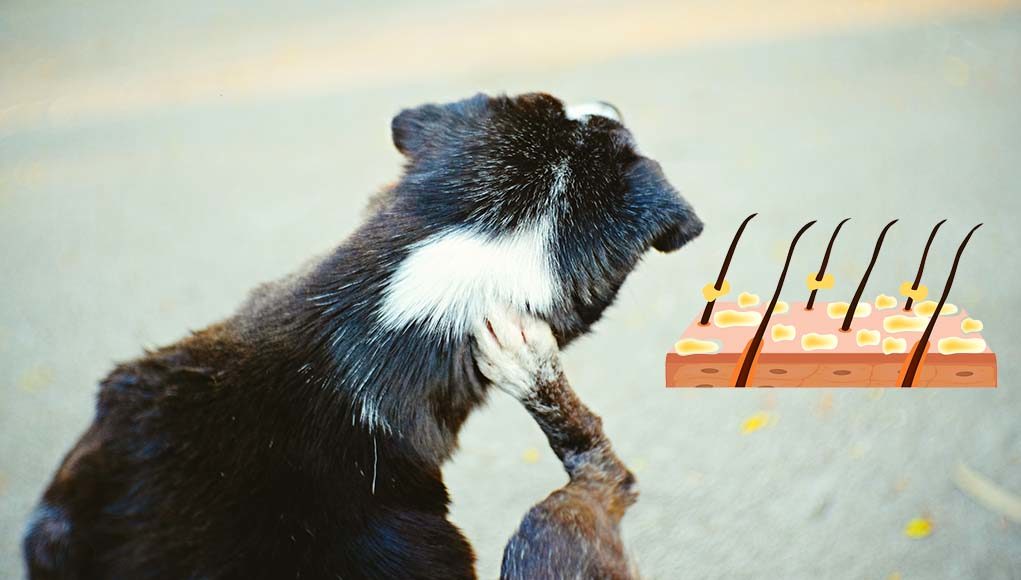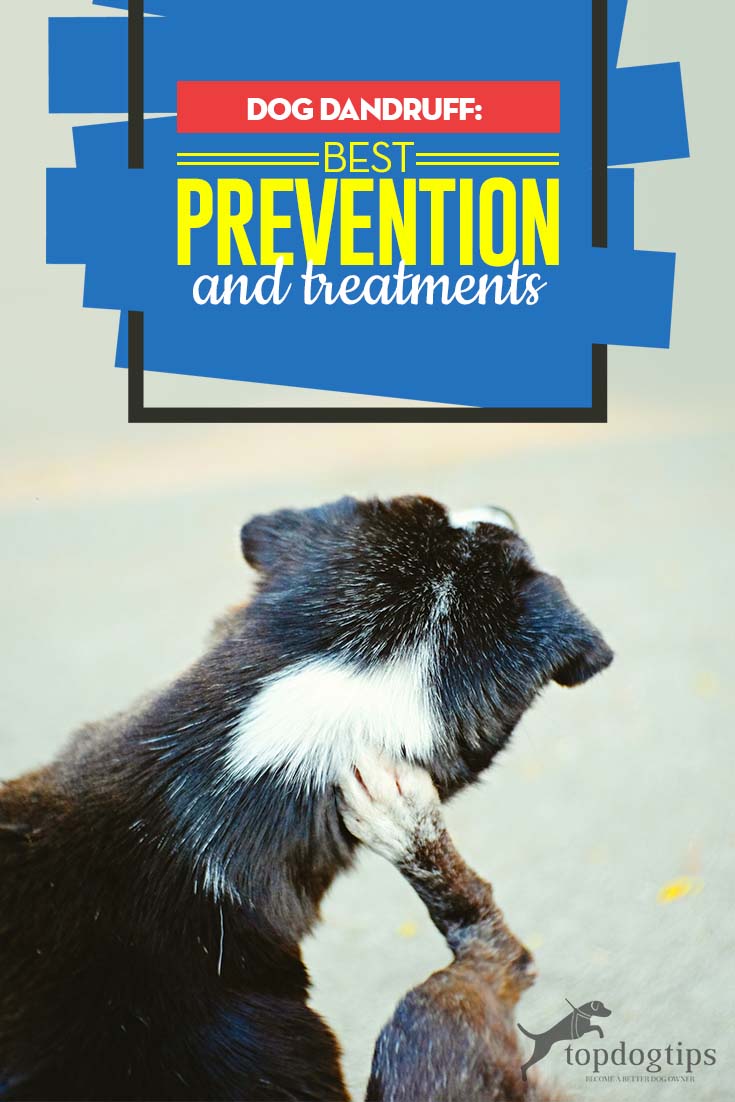Dandruff isn’t just a problem for humans; it can pose a problem for your dog too. If your dogs (or rather, you) are struggling with those pesky white flakes, know that there are many ways to both prevent and treat this problem. Here's what you must know.
Most of us are familiar with this. In humans, dandruff is a condition where the skin of the scalp becomes very dry and starts to flake. This results in dead skin flakes sloughing off and showing up in the hair and on the shoulders, looking like snowflakes. Just like us, our canine companions can also get dandruff, and those little white flakes in your dog’s coat are dried flakes of skin.
Causes of Dandruff in Dogs
There are numerous possible causes of dog dandruff, so let’s look at each one separately.
1. Allergies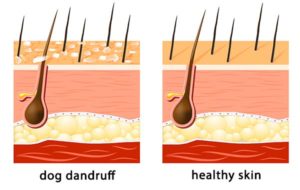
Dogs can suffer from allergies to foods, environmental allergies, and flea allergies… the list is endless, and most of these allergies can cause your dog’s skin to become dry and flaky.
As the natural moisture in your dog’s skin disappears, their skin gets dry and itchy. This causes the skin to slough off on its own, but it also causes your dog to scratch their dry skin which causes more dandruff flakes to slough off.
2. Endocrine disorders
Endocrine disorders may also cause your dog to have dandruff. There are numerous endocrine disorders in dogs, including Cushing’s disease and hypothyroidism. These conditions cause the hormonal system to get out of balance in the pet's body, and when that happens, various bodily systems start to behave abnormally.
In the case of Cushing’s disease, for example, the dog's skin becomes very thin and dries out. In turn, this causes the skin to be itchy and slough off. Again, this results in dandruff.
3. Skin infections
Skin infections are the result of a variety of related skin conditions. This can be caused by bacteria or yeast, and depending on the cause, the skin can become dry, itchy, and flaky. Whether it’s just a natural process of the infection or the result of itching caused by the infection, as the skin dries out and sloughs off, it causes dandruff.
4. Malnutrition
When your dog’s diet isn’t well-rounded and they are not regularly receiving the necessary nutrients, and become vitamin deficient, it affects all aspects of the body from the heart to the skin. If your dog is suffering dry flaky skin and dandruff as a result of malnutrition, then chances are that you will also notice a range of other (likely more serious) symptoms as well.
5. Shampoo
Even something as simple as trying out a new pet shampoo can influence your dog’s skin health and wind up causing dandruff. If your dog recently had a bath and you washed them with shampoo, and now you're starting to notice dandruff, then it’s very likely the result of skin irritation was caused by shampoo.
6. Weather conditions
Like humans, dogs' skin health can be influenced by the weather. For example, during winter when the heater is on in your home, your dog’s skin can dry out just like yours. This creates an itch, and the pup scratching that itch will likely cause dandruff. Excessively arid conditions can also be the cause of this.
ALSO READ: Why Is My Dog Itching? 4 Scientific Reasons and Proven Treatments
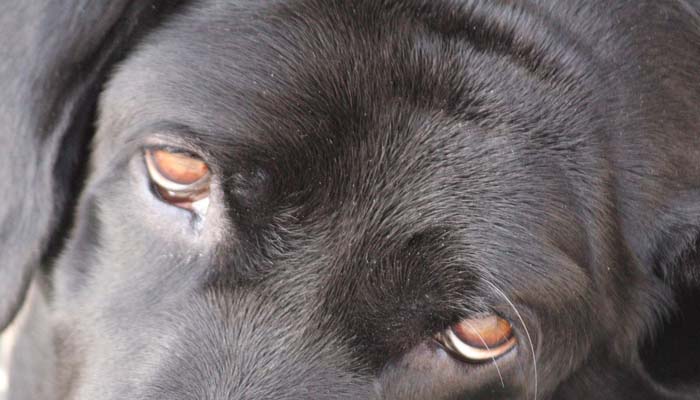
How to Treat Dog Dandruff
If your dog is itching and scratching, and generally seems unhappy because of their dandruff, the first step is finding out the cause. Once you know the cause, you can address it directly to stop the irritation and dandruff. Here's how to treat the condition in each one of those cases.
The severity of dandruff conditions will vary. There could only be a small amount of barely noticeable flakes on the dog's skin (like in the above picture), or it could be more severe (a condition called Canine Seborrhea) where there's skin inflammation and flakes are visible from a distance – the below picture shows the dog with severe cases of canine seborrhea and other skin problems:
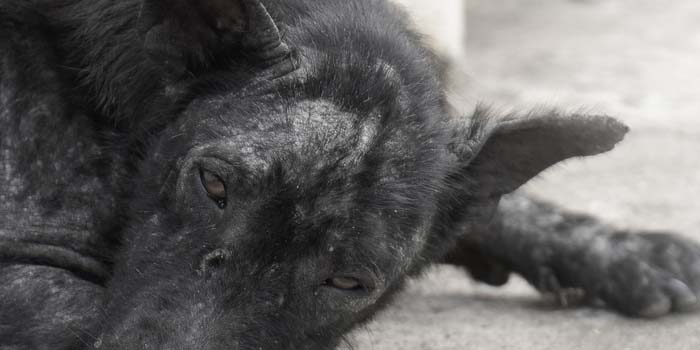
Regardless, the treatment begins from the same place – looking for the cause first. In severe cases, your vet should be your first point of contact. In mild cases, even if your pup hasn't yet developed Canine Seborrhea, it's best to start the treatment right away, since there's a chance the condition may worsen.
If your dog’s dandruff is caused by allergies…
If your dog’s dandruff is the result of allergies, you will have noticed an ongoing pattern of itching and scratching whenever your dog comes into contact with their allergen. This likely isn’t the first time that you have noticed dandruff on your dog’s coat either.
To bring your allergy dog any relief from their itchy skin, the first step is to find out what your dog is allergic to. You may have noticed already that there is a specific culprit at play (such as him eating a specific food, visiting a certain environment, or coming in contact with other animals), but if not, it’s worth paying a visit to your vet to have your dog allergy tested.
Once you know the cause of your dog’s allergy, you can remove the allergen and the pet's skin condition should start improving. You can take preventative steps to protect your pupper against similar outbreaks in the future through dietary changes (after an elimination diet), protective wear, or medication.
Endocrine disorders
If your pup's dandruff is caused by an endocrine disorder, it’s crucial that you work with your veterinarian to get that condition under control. With endocrine disorders, your dog can experience any number of side effects and symptoms that range from mild to severe. When left untreated, they can cause life-threatening problems.
Therefore, before you focus on that itchy skin, get the pet to the vet for a full picture of your dog’s health. If the canine is are already on medication, talk to your vet about the symptoms that you are seeing and discuss a possible need for tweaking current medications.
Skin infections
Skin infections can result from a simple infected cut or from a large gash obtained while hunting or similar activities. Whatever the cause of your dog’s skin infection, get to a vet right away and address that infection.
Your veterinarian may want to clean out the wound for the second time and will likely prescribe an antibiotic or anti-fungal topical treatment to help to clean out any remaining infection so that the skin can begin to heal.
Malnutrition
There are multiple reasons why your dog may be suffering from malnutrition and it’s important that you get to the bottom of it. If left ignored for too long, malnutrition can lead to incredibly severe problems that will be difficult to fix and even death. Dog dandruff will be the least of your concerns at this point.
If you suspect that the dog is suffering from dandruff as a side effect of malnutrition, talk to your vet and explain the symptoms that you are seeing. The veterinarian will take a look at your pooch and run a number of tests to check for parasites, illness, and anything else that may be the cause of their malnutrition. The findings of the testing will determine what you should do next to care for your dog’s skin health and overall health.
Shampoo
If you noticed dandruff on your pet for the first time after using new dog shampoo, there is a high likelihood that that shampoo brand is the cause of the problem. The best thing you can do is to leave your dog’s skin alone and just not use that shampoo again, and see if the problem goes away.
Note that bathing your Fido again to get rid of any shampoo residue can cause the skin to dry out, exacerbating the problem even more. However, if the dog's flaky skin is accompanied by redness, it’s better to wash them down in tepid water and monitor for any signs of improvement. If, after 24 hours, you don’t notice any improvement in their skin, head to the vet’s office for an assessment.
Weather conditions
We can’t control the weather, but if you suspect that dandruff is caused by weather conditions, there are things that you can do to counteract them. For example, in the arid heat, you may find it helpful to keep a humidifier running. This won’t just leave your dog feeling better; it’ll make you feel better too!
How to Prevent Pet Dandruff in the Future
 Of course, the health of your dog’s skin is influenced by a number of factors and your main focus should always be on bringing your dog’s skin back to a healthy balance. Once your dog’s skin has healed and they no longer suffer from dandruff problems, there are some steps you can take to boost your dog’s overall skin health and make it somewhat dandruff-proof.
Of course, the health of your dog’s skin is influenced by a number of factors and your main focus should always be on bringing your dog’s skin back to a healthy balance. Once your dog’s skin has healed and they no longer suffer from dandruff problems, there are some steps you can take to boost your dog’s overall skin health and make it somewhat dandruff-proof.
1. Vitamin E
Vitamin E oil is a great antioxidant that works to protect animals' skin against UV rays when outdoors. Vitamin E oil is also a great moisturizer for your dog’s dry skin. To soothe specific dry spots, rub a little high-grade vitamin E oil on them (something as cheap as this will work).
For potentially better overall protection, some experts recommend supplementing your pet's diet with high-grade vitamin E oil capsules or an all-in-one multivitamin such as this. However, while some pet owners claim that these helped their dogs' coats, there's no scientific evidence proving that such supplementation actually works.
2. Electrolyte tabs or drinks
Electrolyte tablets or drinks are a helpful solution for your puppy's dry skin if their skin problem is the result of dehydration or a health condition that induces symptoms of dehydration. Not sure where to find them? Check your local pet food store or talk to your veterinarian about how you can supplement your dog’s fluid intake using electrolytes.
3. Oatmeal bath
If you remember having chickenpox as a child, you may also remember being soaked in an oatmeal bath to relieve your itching symptoms. If, after curing your pet's skin problems, you notice them starting to come back, you can use an oatmeal bath to protect against itching and hopefully stop the problem in its tracks. Oatmeal is one of the few scientifically proven ingredients to work on dogs' coats, according to vets and studies.
Note: The first point of contact anytime you notice your pet's skin looking unusual or their health taking an unexpected turn should be your veterinarian. If your vet suggests that dog dandruff is a result of a simple and mild irritation, you can use those skin soothing solutions I've mentioned above. Just please remember, NEVER use an anti-itch cream that contains zinc-oxide as it poses a real risk to your dog’s health.
READ NEXT: Hydrocortisone Cream for Dogs – What Is It and How to Use It Safely
Pin and share with other dog owners:


